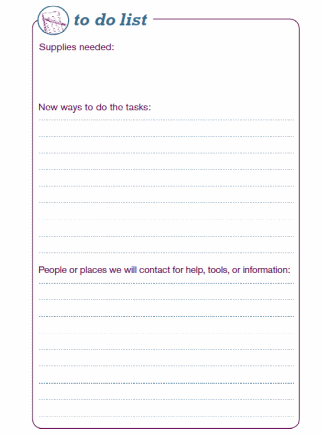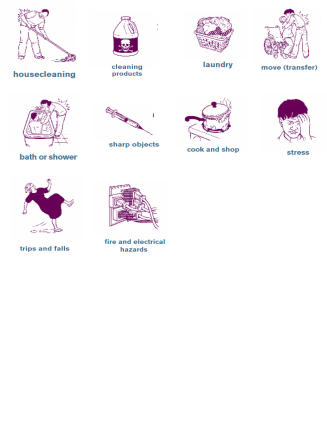Home Care Worker Training Curriculum Guide
Survey to Evaluate Occupational and Safety Educational Materials for Home Care Workers
Att F_HC Worker Training Curriculuum Guide
Home Care Worker Training Curriculum Guide
OMB: 0920-0880
Attachment F Form Approved
OMB No. 0920-XXXX
Exp. Date __XX/XX/20XX
Home Care Worker Training Program Curriculum Guide
Public reporting burden of this collection of information is estimated to average 60 minutes per response, including the time for reviewing instructions, searching existing data sources, gathering and maintain the data needed, and completing the collection of information. An agency may not conduct or sponsor, and a person is not required to respond to a collection of information unless it displays a currently valid OMB control number. Send comments regarding this burden estimate or any other aspect of this collection of information, including suggestions for reducing this burden to CDC/ATSDR Information Collection Review Office, 1600 Clifton Road NE, MS D-74, Atlanta, Georgia 30333; ATTN: PRA (0920-XXXX).
Objectives:
By the end of this workshop participants will:
Understand the importance of homecare worker health and safety
Be able to use the handbook to identify and address hazards they may face on the job
Describe how to work effectively with the consumer to identify and address problems
Know who to contact for more information or assistance.
Activity |
Time |
Materials |
1. Introduction
A. Welcome the group and review agenda and purpose of workshop – to give people tips and resources that will help them stay safe on the job. (expand more - perhaps a few stats about the rate of injury to illustrate important of problem?)
B. Ask everyone to say name, number of years they have been a homecare worker, who they care for. |
10 minutes |
Flip chart and markers |
2. Body Mapping: Where does it hurt?
A. Say that the first step to preventing injuries is to recognize when there’s a problem. Tell people that we want them to think about where they might have had symptoms that they think might be caused by their homecare work. Post Body Chart flip chart and provide a set of red dots to each participant. Ask people to post a dot where they experience health symptoms they believe may be related to their work.
B. Report back: Discuss common patterns, etc. Say that the purpose of this workshop and of the handbook they will be receiving is to prevent these symptoms and injuries.
|
10 minutes |
Body Chart Red dots |
3. Overview of handbook
Distribute the handbook. Briefly review the overall content. Point out introduction, communication section, checklist, structure of tip sheets, resource list and purpose of action plan. Say that we will look at some of these sections more closely during the workshop.
|
5 minutes |
Handbooks |
4. Why does it hurt?
A. Ask people to turn to the checklist on p. xx. Review the tasks represented.
B. Distribute a set of stickers that represent the common tasks/hazards on the checklist. Explain that each picture refers to a range of activities associated with a common task. For example, the picture of the mop, is meant to refer to all housekeeping tasks, including vacuuming, dusting,etc.
C. Ask people to think about what homecare task might cause the symptom they marked on the body chart and go up and post the relevant stickers next to their dots. Explain that they may use the same picture for various symptoms. If a task is not represented, tell people to write that task on a blank sticker and post it on the chart.
D. Report back: When everyone has finished posting their stickers, discuss what people have posted and highlight patterns. Explain that the handbook is designed to provide tips on how to make these tasks safer so that symptoms, illnesses and injuries can be prevented.
|
15 minutes |
Stickers |
5. Using the handbook to solve problems
A. Refer to list of hazards/tasks on flip chart. Assign small groups (3 to 5 in each group) one hazard/task that correspond with one of the tip sheets. Distribute Safety Tip Activity Worksheet. Review the following directions:
B. Report back: Ask a spokesperson from each group to report on the solutions they indentified and on some of the ideas for how to talk with the consumer about the changes they need.
|
15minutes |
Worksheet and ToDo list |
6. Closing
1. Discuss who they might go to for help and further assistance. Discuss role of union and public authority and refer people to the resources section of the handbook.
2. Thank people for coming. |
5 minutes |
Handbooks, other contact info? |
Safety Tip Activity
Training Worksheet for Activity #5
Safety Tip # _______
Review this Safety Tip in your handbook.
1. What are some possible solutions to make this work safer?
2. Review the “How to talk to each other about safety” section on pages 6-9 and the solutions you wrote for #1 above. What are some things you could do or say to convince your consumer that your solutions are good ideas?
3. As a group, please complete the following to-do list for your Safety Tip. An example of how to fill one out is on page 3 of your handbook.

Sticker Icons for Activity # 4

| File Type | application/msword |
| File Title | Supporting Statement |
| Author | slb8 |
| Last Modified By | Thelma Elaine Sims |
| File Modified | 2010-10-14 |
| File Created | 2010-10-14 |
© 2026 OMB.report | Privacy Policy